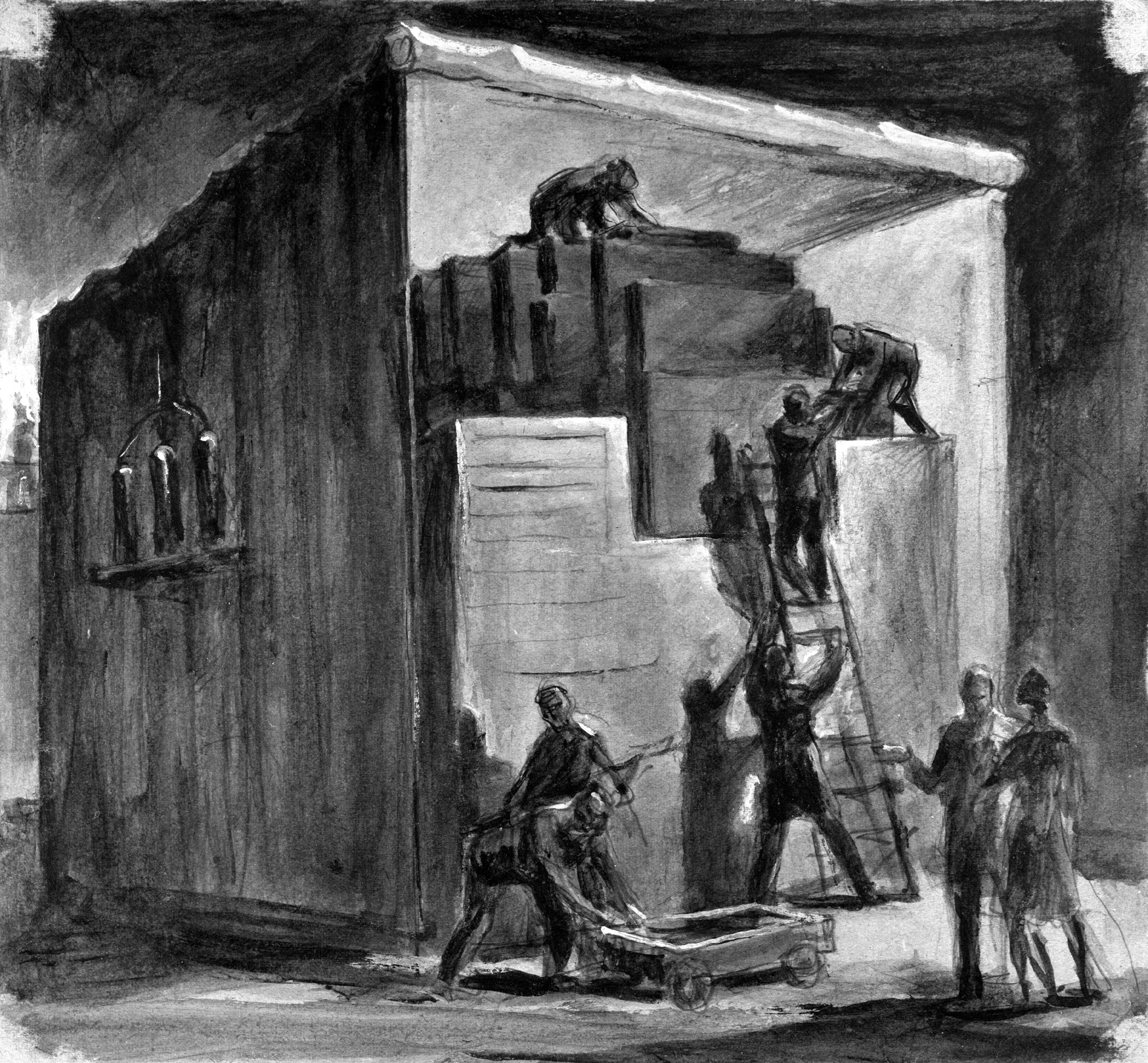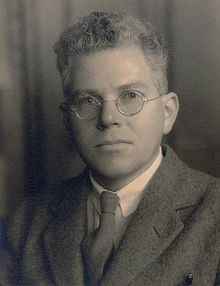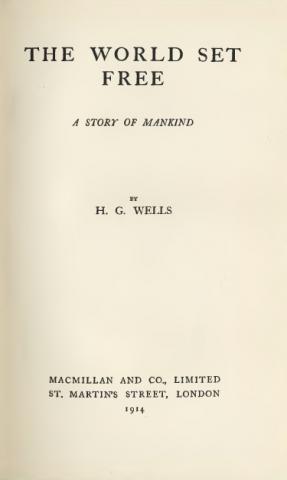Beginnings
Decades before the Manhattan Project, the possibility of harnessing the enormous energy inside the atom captured the imaginations of scientists and the public who foresaw a source of unlimited energy as well as enormously destructive new weapons. In 1914, novelist H. G. Wells envisioned an atomic bomb that would produce a continual radioactive explosion in his book The World Set Free, which described a world war in 1956 in which England and France fought Germany and Austria. One passage in the novel about an atomic explosion reads, “When he could look down again it was like looking down upon the crater of a small volcano. In the open garden before the Imperial castle a shuddering star of evil splendor spurted and poured up smoke and flame towards them like an accusation.”
For Hungarian physicist Leo Szilard, the novel triggered a fascination with atomic energy. After reading a summary of a speech by British physicist Ernest Rutherford in which Rutherford was critical of the idea of atomic power, Szilard was struck by the possibility of a nuclear chain reaction while crossing the street in London in 1933—an idea he went on to patent, with characteristic foresight, in 1934.
Discovery

Within weeks, Austrian physicist Lise Meitner and her nephew Otto Frisch explained that Hahn and Strassmann’s results had resulted from the “fission” of the uranium-235 nucleus in 1939. Frisch and Meitner conducted additional experiments showing that the fission of uranium-235 resulted in a great deal of energy, making a chain reaction possible. Word spread quickly as physicists from Britain, France, Italy, Russia, and the United States rushed to duplicate Hahn and Strassman’s experiment by bombarding uranium with neutrons. The race to develop an atomic bomb had begun.
In August 1939, Szilard and Albert Einstein wrote to President Franklin D. Roosevelt to warn him that Nazi Germany could already have an atomic program underway and to suggest that the United States investigate the possibility of obtaining atomic bombs of its own. After the letter reached Roosevelt’s desk in October, the president created The Uranium Committee, but it was poorly funded and stalled by American scientists’ skepticism about the feasibility of nuclear weapons.
Adoption
 Fear that Adolf Hitler would be the first to develop and use atomic weapons initially spurred the United States and United Kingdom to make an atomic bomb. More than a hundred scientists who had fled Nazi Europe joined the American and British efforts. In 1940, two such refugees in Britain, Otto Frisch and Rudolf Peierls, warned that if Germany had an atomic bomb, “No shelters are available that would be effective… The most effective reply would be a counter-threat with a similar bomb.”
Fear that Adolf Hitler would be the first to develop and use atomic weapons initially spurred the United States and United Kingdom to make an atomic bomb. More than a hundred scientists who had fled Nazi Europe joined the American and British efforts. In 1940, two such refugees in Britain, Otto Frisch and Rudolf Peierls, warned that if Germany had an atomic bomb, “No shelters are available that would be effective… The most effective reply would be a counter-threat with a similar bomb.”
In March 1941, the British MAUD Report unanimously concluded that creating an atomic bomb was both feasible and urgent, stating that “every effort should be made to produce bombs of this kind.” However, the United States was slow to embrace the undertaking. Even Vannevar Bush, President Roosevelt’s closest scientific advisor, was skeptical of the “wild notions” of atomic bombs.
In August, Australian physicist Mark Oliphant traveled to the United States to find out why the Uranium Committee had stalled and to convince American officials that an atomic bomb should be built. Oliphant met with several top physicists, including Ernest O. Lawrence, Arthur Compton, and Enrico Fermi, to persuade them that a bomb was feasible. His message had an impact: by spring 1942, the compelling reports of James Chadwick and other British scientists prevailed. Bush became an ardent advocate of nuclear weapons, telling Secretary of War Henry Stimson: “Nothing should stand in the way of putting this whole affair through to conclusion, on a reasonable scale, but at the maximum speed possible.”





